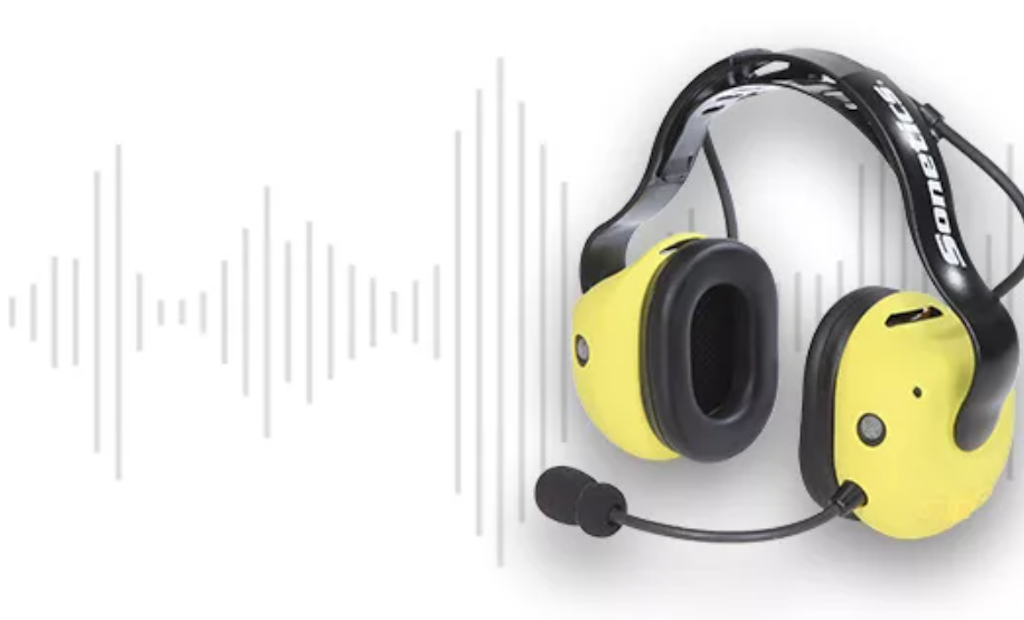Interested in Municipal/Industrial?
Get Municipal/Industrial articles, news and videos right in your inbox! Sign up now.
Municipal/Industrial + Get AlertsNoise cancelling headsets have come a long way in the past 30 years, and they provide many advantages for workers who need to communicate in loud environments. Noise cancelling technology restores the ability to hold a conversation. With distracting sound gone, voices are easier to hear, improving understanding of messages.
We’ve all experienced how workplace noise can make conversation difficult to impossible (don’t get me started on video conferencing). But in the spirit of adaptation, teams have developed a lot of workarounds. You turn off the truck or move away from the compressor in order to hear instructions. You shut down loud equipment for a couple of minutes so you can have a quick face-to-face on what you need to get done.
But there are a couple of problems with those adaptations. First, even if you shut off your equipment, there are likely other sources of noise that you can’t control, like conveyor belts or nearby crews using their own loud machines.
Shouting creates more problems than solutions
“We’ll just yell,” you reply. “All we need is a minute to get on the same page.” Sure, but if it’s loud enough that you need to yell, chances are that noise is going to interfere with your buddy’s ability to understand your shouted instructions. It will take more time to get your message across.
Often you’ll move closer together to avoid yelling louder, removing your hearing protection devices so you can hear each other. But now you’re exposed to potential hearing damage and to violations of CDC’s social distancing guidelines. And just to pile on a little more, frequent yelling also increases blood pressure.
Putting distance between you and productivity
“Well fine, we’ll just move away from the noise to talk.” But that racks up even more lost time, negatively affecting productivity. It also assumes that you can find a place that’s far enough away from workplace noise that doesn’t hover above OSHA-recommended safety levels. The farther you have to go to find a quiet place to talk, the more time you lose.
Teams can’t work without communication
What about those jobs that require real-time communication? From crane operations, to line pulling, to pipeline replacement and hydroexcavation, there are lots of tasks that require your crew to not only work alongside each other, but together, coordinating maneuvers with precision timing.
And all that goes out the window when you can’t hear each other. So what’s the answer to this complex problem? Enter the noise-canceling headset.
The Basics of Noise Cancellation Technology
Here’s a very quick primer. Sound travels in waves. A microphone on your noise-canceling headset receives an incoming sound wave, and electronics inside the headset create its ‘opposite.’ The opposing wave is broadcast into the ear dome of the headset just as the outside wave arrives. When the waves collide, that sound is cancelled.
Also called active noise reduction (ANR), this technology works best with constant, low-frequency sound, such as engine or traffic noise. Noise cancellation is less effective at removing high frequency sound, like the hiss of a pneumatic sprayer. That’s why noise-canceling microphones are often combined with noise reduction earmuffs. Put the two together and you have a noise-canceling headset.
The benefits of using noise-canceling headsets
It’s hard to overstate what a game-changer noise-canceling headsets can be when you’ve been struggling with loud job sites for so long. How does boosting productivity and improving safety sound?
Here are the key advantages that noise cancelling headsets offer for teams:
- Effective communication – Hear messages clearly the first time. Understanding improves without interference from environmental sound.
- Increased productivity – Clear communication keeps the job moving safely and efficiently. You gain back the time you lost having to repeat instructions.
- Decreased downtime – Now that you have effective, real-time communication despite the noise, you can avoid shutting down equipment or stopping work to talk with the team.
- Improved safety – Noise cancelling headsets give you the best of both worlds: no compromise team communication and personal hearing protection.
Key features that improve the experience
These features take an average noise-canceling headset to the next level, providing an experience that improves audio and boosts safety.
- Full-duplex communication – People talk over each other. Sometimes they need to interrupt or warn. Noise cancelling headsets that use “full-duplex” wireless technology to enable natural conversation are a step above.
- Listen-through technology – Some workers object to hearing protection because it can prevent them from hearing warnings, alarms or other critical communications. Pass-through microphones (sometimes called listen-through) let users add back environmental sound, providing a boost of awareness and safety on demand.
- Auto-leveling microphone – When your team’s tasks take them from high- to low-noise areas and back again, an auto-leveling mic smooths out the transitions. It detects changes in overall sound levels and automatically adjusts sensitivity to keep voices at normal levels
Canceling out the noise
Noise-canceling headsets improve team communication and productivity. If your team is struggling to be heard, confused by easily misinterpreted hand signals, or walking a country mile to find a quiet place to talk, consider noise-canceling headsets to get everyone on the same page.
To find out more about Sonetics wireless headsets, click the link or call 800-833-4558.






